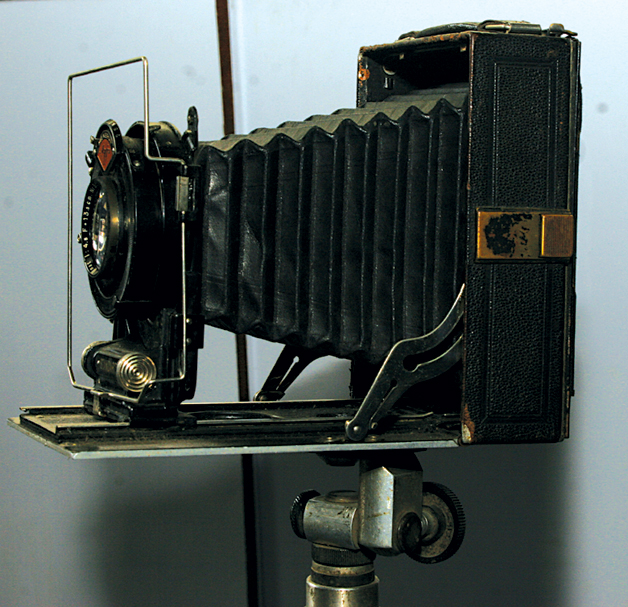“I don’t know what happened to the wooden body of the camera, I only have the lens left. Somebody probably used it for firewood”

The first time I saw this fascinating collection of cameras was in 1998 when I went to Thimi for the “Visit Nepal Fes tival” of Madhyapur. Little did I know that what I saw then, was a fraction of Bajracharya’s vast collection of old, antique and classic cameras. At the fair, two cameras that grabbed my attention were a very large glass-plate camera and a tiny Minox Spy camera displayed side by side. It seemed strange to find such cameras in a place like Thimi, in the middle of a cultural festival that showcased liquor making and Newar dances. In fact, Madhyapur is famous for pottery.
On my recent visit to Madan Babu Bajracharya’s house in Thimi, I was disappointed not to see the large format camera. “I don’t know what happened to the wooden body of the camera, I only have the lens left. Somebody probably used it for firewood,” said Madan Babu laughing, when we enquired about the large format camera. Anything is possible in this country where a newly built toilet complex was used by local farmers for storing grain. However, we were relieved to find the pocket-sized Minox still in his possession. But, what floored me was the vast collection of more than 44 cameras (not counting the movie cameras). Madan Babu may not be a household name, but foreigners hear about his collection and visit him at his home. Most want to buy some rare specimen, but MB is not parting with any. A German, also an avid camera collector brought along two volumes of books that catalogued all cameras made in Germany since 1900 to 1986. He was shocked to find a camera in Bajracharya’s collection that wasn’t listed in the book. The camera in question had been made in Germany.
It all began way back in 1965, when he set up shop in New Road and started repairing cameras at the age of 21. His trade naturally led to friendship with professional photographers of whom there were not many. It was a time when only photographers owned cameras. It wasn’t long before Madan Babu also took up photography as a profession and bought his first camera, an Agfa 6 X 9 Box Camera. Those were the days of large format cameras and 35 mms were still to come. He then started buying old cameras that people wanted to be rid of. Initially, however, he did not realize how valuable they would be one day. It was just a hobby.
Bajracharya’s first purchase was an antique camera from the time of Jung Bahadur Rana. It was a 12” X 15” glass plate camera with a Delmeyer lens from the 1880s. The camera body is missing, but the brass bodied lens is one of his prized possessions. In 1965, the camera cost him NRs 2000/- and today people offer over NRs 100,000/- for it. But his cameras are not for sale; PERIOD. His collection steadily grew as his reputation as a collector grew. Even today, he is the only known Nepali collector of antique cameras. “Most of the sellers are Nepali people. You don’t get foreigners selling antiques, they only buy them,” informs Madan Babu, smiling with his wizened eyes. You can feel his pride in his collection and he has every right to be proud. A lesser man would have sold a good many and made a fortune.
In the early days, film processing could only be done in Kathmandu, and Madan Babu would come all the way from Thimi to the Capital to have his films developed. S. Tirtharaj at Makhan was the official dealer for Kodak and this shop was still enjoying a healthy business as late as the 1990s. However, it seems to be slowly losing out to the digital age. With the coming of this new age, Bajracharya’s cameras will have even more value. But it’s not the cameras worth that means so much to this obsessed collector. “If they had a museum for such antiques, I would gladly donate them for display. But there isn’t one, and I don’t want these cameras to leave Nepal,” says Madan Babu speaking from his heart.









